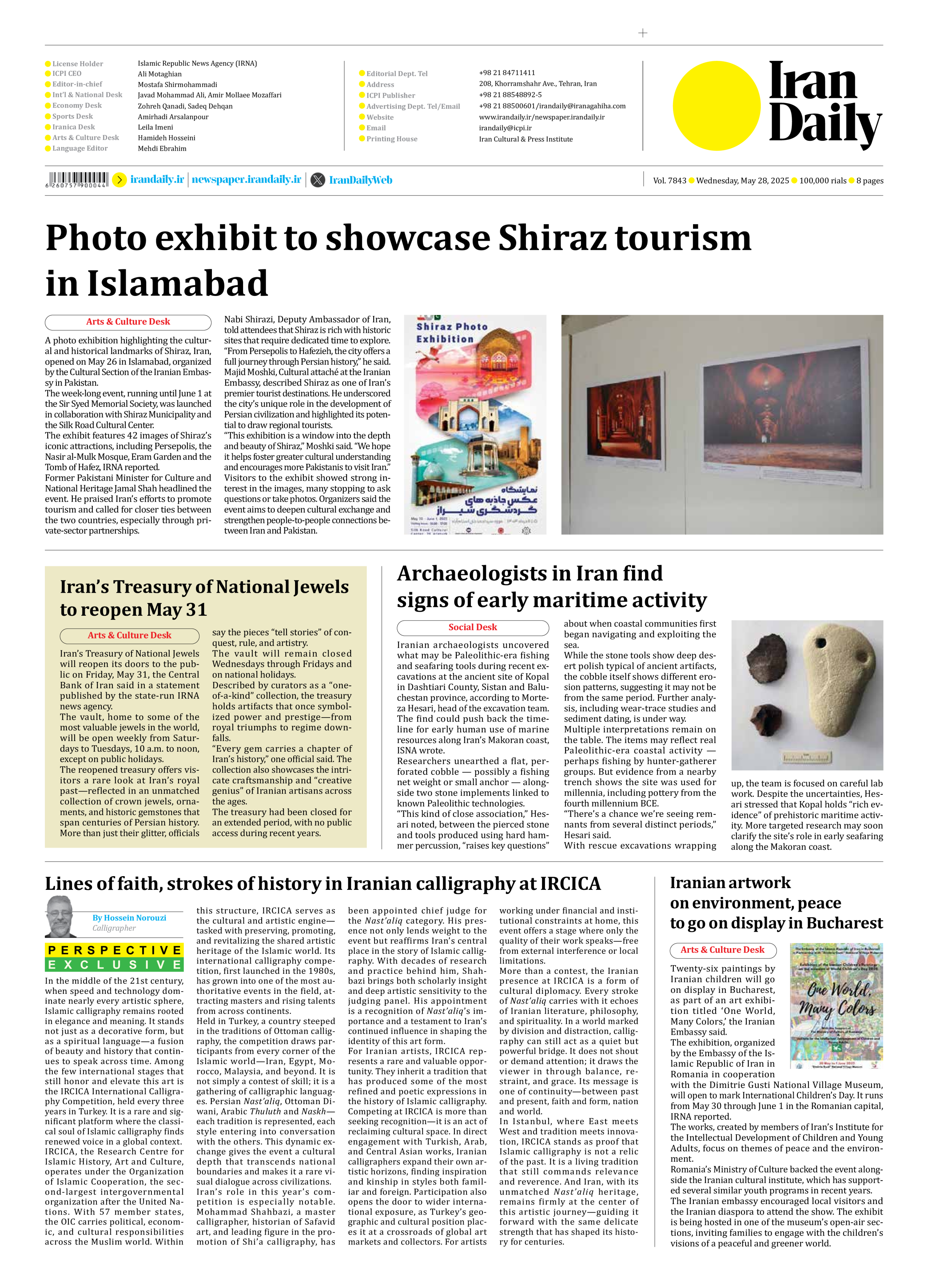
Lines of faith, strokes of history in Iranian calligraphy at IRCICA
By Hossein Norouzi
Calligrapher
In the middle of the 21st century, when speed and technology dominate nearly every artistic sphere, Islamic calligraphy remains rooted in elegance and meaning. It stands not just as a decorative form, but as a spiritual language—a fusion of beauty and history that continues to speak across time. Among the few international stages that still honor and elevate this art is the IRCICA International Calligraphy Competition, held every three years in Turkey. It is a rare and significant platform where the classical soul of Islamic calligraphy finds renewed voice in a global context.
IRCICA, the Research Centre for Islamic History, Art and Culture, operates under the Organization of Islamic Cooperation, the second-largest intergovernmental organization after the United Nations. With 57 member states, the OIC carries political, economic, and cultural responsibilities across the Muslim world. Within this structure, IRCICA serves as the cultural and artistic engine—tasked with preserving, promoting, and revitalizing the shared artistic heritage of the Islamic world. Its international calligraphy competition, first launched in the 1980s, has grown into one of the most authoritative events in the field, attracting masters and rising talents from across continents.
Held in Turkey, a country steeped in the traditions of Ottoman calligraphy, the competition draws participants from every corner of the Islamic world—Iran, Egypt, Morocco, Malaysia, and beyond. It is not simply a contest of skill; it is a gathering of calligraphic languages. Persian Nast’aliq, Ottoman Diwani, Arabic Thuluth and Naskh—each tradition is represented, each style entering into conversation with the others. This dynamic exchange gives the event a cultural depth that transcends national boundaries and makes it a rare visual dialogue across civilizations.
Iran’s role in this year’s competition is especially notable. Mohammad Shahbazi, a master calligrapher, historian of Safavid art, and leading figure in the promotion of Shi’a calligraphy, has been appointed chief judge for the Nast’aliq category. His presence not only lends weight to the event but reaffirms Iran’s central place in the story of Islamic calligraphy. With decades of research and practice behind him, Shahbazi brings both scholarly insight and deep artistic sensitivity to the judging panel. His appointment is a recognition of Nast’aliq’s importance and a testament to Iran’s continued influence in shaping the identity of this art form.
For Iranian artists, IRCICA represents a rare and valuable opportunity. They inherit a tradition that has produced some of the most refined and poetic expressions in the history of Islamic calligraphy. Competing at IRCICA is more than seeking recognition—it is an act of reclaiming cultural space. In direct engagement with Turkish, Arab, and Central Asian works, Iranian calligraphers expand their own artistic horizons, finding inspiration and kinship in styles both familiar and foreign. Participation also opens the door to wider international exposure, as Turkey’s geographic and cultural position places it at a crossroads of global art markets and collectors. For artists working under financial and institutional constraints at home, this event offers a stage where only the quality of their work speaks—free from external interference or local limitations.
More than a contest, the Iranian presence at IRCICA is a form of cultural diplomacy. Every stroke of Nast’aliq carries with it echoes of Iranian literature, philosophy, and spirituality. In a world marked by division and distraction, calligraphy can still act as a quiet but powerful bridge. It does not shout or demand attention; it draws the viewer in through balance, restraint, and grace. Its message is one of continuity—between past and present, faith and form, nation and world.
In Istanbul, where East meets West and tradition meets innovation, IRCICA stands as proof that Islamic calligraphy is not a relic of the past. It is a living tradition that still commands relevance and reverence. And Iran, with its unmatched Nast’aliq heritage, remains firmly at the center of this artistic journey—guiding it forward with the same delicate strength that has shaped its history for centuries.







